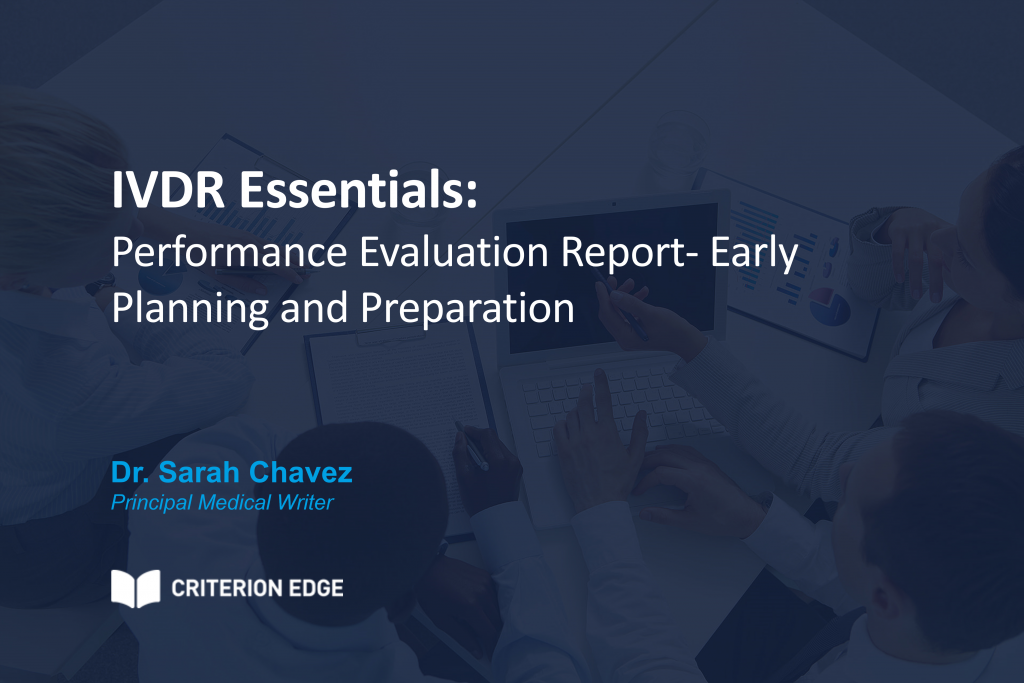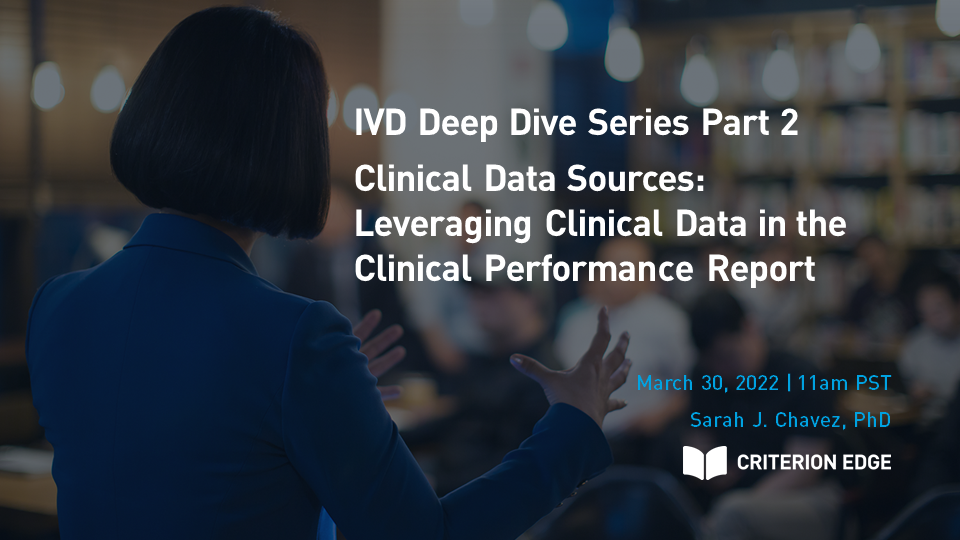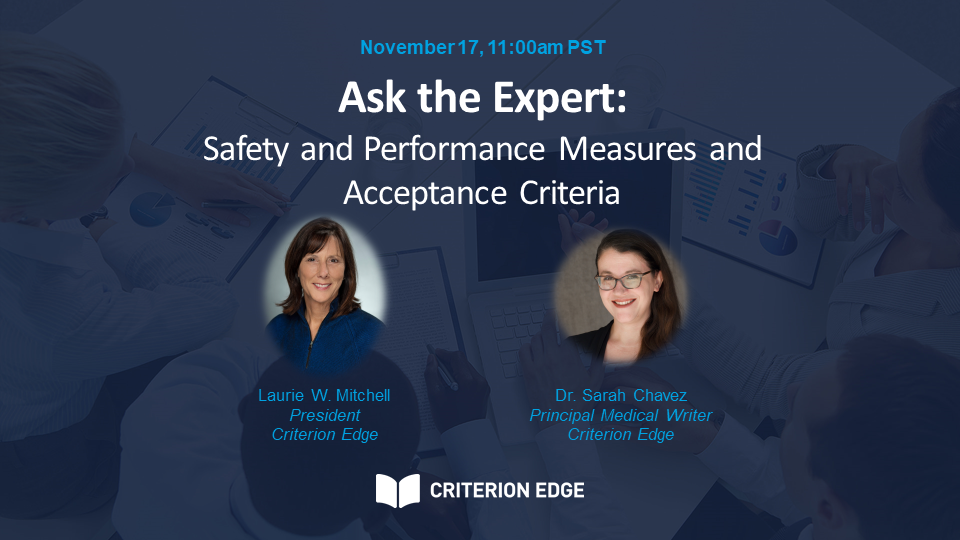The Importance of Clinical Data: Sources of Data, Literature Searches, Weighting & Appraisal and Effective Presentation in your CER or PER
Do you have questions about how to generate, collect, analyze, and assess clinical data pertaining to your IVD or medical device? And what are the best practices for conducting literature searches? How do you effectively present your data in your clinical evaluation report or performance evaluation report?
During this 45-minute Q&A session, our President Laurie Mitchell is joined by Dr. Sarah Chavez to answer some commonly asked questions and give expert advice. Answers cover how to best collect and present data on similar (competitor) devices as well as data collection strategies for new products. In addition, there is discussion around best practices for and examples of appraising literature and clinical data. Also, clarification between safety & performance metrics and risks & benefits analyses is given, plus so much more.
Watch the recording!
Who should watch this forum?
Those Regulatory, Quality and Clinical leaders and teams who develop, write, review or approve clinical evaluation reports or performance evaluation reports for EU MDR or IVDR submissions.
How to Empower Data-Driven Decisions in Your Organization
Every day, pharma and medical device companies need data from Systematic Literature Reviews (SLRs) to inform, direct, and help drive their internal processes and decisions. Of course, to comply with global regulatory requirements, clinical literature is also required. Conducting SLRs to search, screen, and extract data from published sources can present challenges to your team in terms of expertise (e.g., medical librarian), methodology, and resources. It takes trained people with the availability to screen, review, and analyze the literature.
Download our free white paper, Systematic Literature Review: How to Empower Data-Driven Decisions in Your Organization to read more on this topic.
You can also watch our webinar on this topic.
Our President Laurie Mitchell joins Jennifer Tetzlaff, Research Product Specialist with Evidence Partners, to talk to you about the following points:
- Examples of how the use of published data can support regulatory expectations
- When to conduct a systematic literature review
- Best practices for conducting a methodologically-sound SLR
- Use of available tools and technology






